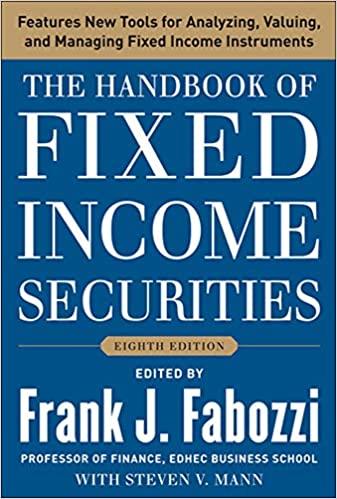Question
P4-3A. Product Cost Report-Weight Average Method Riley Manufacturing Corporation produces a cosmetic product in three consecutive processes. The costs of Department 1 for May 2019

P4-3A. Product Cost Report-Weight Average Method Riley Manufacturing Corporation produces a cosmetic product in three consecutive processes. The costs of Department 1 for May 2019 were as follows:
Cost of beginning inventory
Direct materials $9,800
Conversion costs.. $16,480
Costs added in Department 1:
Direct materials$295, 120
Direct labor..$298, 550
Manufacturing overhead.$203,130 $796,800
Department 1 handled the following units during May:
Units in process, May 1, 2019....2,000
Units started in Department 1.40,000
Units transferred to Department 2..39,000
Units in process, May 31, 2019....3,000
On Average, the May 1 units were 30% complete. The May 31 units were 60% complete. Materials are added at the beginning of the process, and conversion costs occur evenly throughout the process in Department 1. Riley uses the weighted average method for process costing.
Required
Assemble the product cost report for Department 1 for May.
P4-5A. Two Departments, Journal Entries with supporting Calculations-Weighted Average Method (Note: This problem includes two departments. The second may be beyond the scope of most classes. Instructors may choose to assign only the requirements related to Department 1.)
Patterson Laboratories, Inc., produces one of its products in two successive departments. All materials are added at the beginning of the process in Department 1; no materials are used in Department 2. Conversion costs are incurred evenly in both departments. Patterson uses the weighted average method for process costing. January 1, 2019, inventory account balances are as follows:
Materials inventory.$30,000
Work-in-process-Department 1 (3,000 units, 30% complete)
Direct materials4,560
Conversion costs.10,640
Work-in-process-Department 2 (3,550 units, 40% complete)43,439
Finished goods inventory (2,000 units @ $16)..32,000
During January, the following transactions occurred:
- Purchased materials on account, $90,000
- Placed $84,000 of materials into process in Department 1. This $84,000 represents 24,000 units of materials.
- Distributed total payroll costs: $108,116 of direct labor to Department 1, $62,700 of direct labor to Department 2, and $51,000 of indirect labor to Manufacturing Overhead.
- Incurred other actual manufacturing overhead costs, $81,000. (Credit Other Accounts.)
- Applied overhead to the two processing departments: $88,000 to Department 1 and $43,900 to Department 2.
- Transferred 25,000 completed units from Department 1 to Department 2. The 2,000 units remaining in Department 1 were 20% completed with respect to conversion costs.
- Transferred 26,000 completed units from Department 2 to finished goods inventory. The 2,550 units remaining in Department 2 were 70% completed with respect to conversion costs.
- Sold 20,000 units on account at $27 per unit. Patterson uses weighted average inventory costing procedures for the finished goods inventory.
Required
- Record the January transactions in general journal form for Department 1 and department 2.
- Assemble the product cost report (with its supporting calculations) for Department 1.
- Assemble the product cost report (with its supporting calculations) for Department 2.
- Determine the balances remaining in the Materials Inventory account, in each work-in-process account, and in the Finished Goods Inventory account.
Step by Step Solution
There are 3 Steps involved in it
Step: 1

Get Instant Access to Expert-Tailored Solutions
See step-by-step solutions with expert insights and AI powered tools for academic success
Step: 2

Step: 3

Ace Your Homework with AI
Get the answers you need in no time with our AI-driven, step-by-step assistance
Get Started


